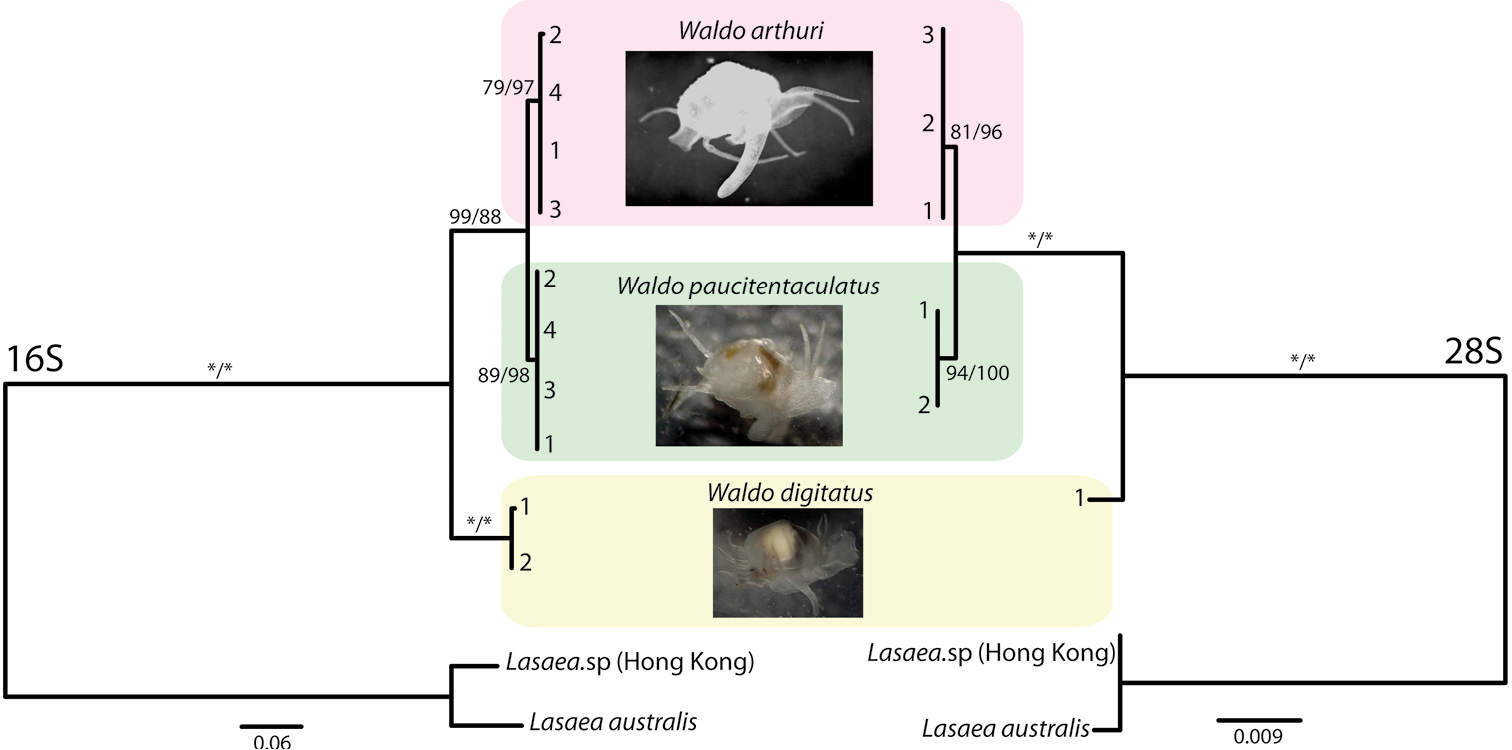|
28S
28S ribosomal RNA is the structural ribosomal RNA (rRNA) for the LSU rRNA, large subunit (LSU) of eukaryotic cytoplasmic ribosomes, and thus one of the basic components of all eukaryotic cells. It has a size of 25S in plants and 28S in mammals, hence the alias of 25S–28S rRNA. Combined with 5.8S rRNA to the 5' side, it is the eukaryotic nuclear homologue of the 23S, prokaryotic 23S and MT-RNR2, mitochondrial 16S ribosomal RNAs. Use in phylogeny The genes coding for 28S rRNA are referred to as 28S rDNA. The comparison of the Nucleic acid sequence, sequences from these genes are sometimes used in molecular analysis to construct phylogenetic trees, for example in protists, Fungus, fungi, insects, arachnids, tardigrades, and vertebrates. Structure The 28S rRNA is typically 4000–5000 nt long. Some eukaryotes cleave 28S rRNA into two parts before assembling both into the ribosome, a phenomenon termed the "hidden break". Databases Several databases provide Sequence al ... [...More Info...] [...Related Items...] OR: [Wikipedia] [Google] [Baidu] |
LSU RRNA
Large subunit ribosomal ribonucleic acid (LSU rRNA) is the largest of the two major RNA components of the ribosome. Associated with a number of ribosomal proteins, the LSU rRNA forms the large subunit of the ribosome. The LSU rRNA acts as a ribozyme Ribozymes (ribonucleic acid enzymes) are RNA molecules that have the ability to catalyze specific biochemical reactions, including RNA splicing in gene expression, similar to the action of protein enzymes. The 1982 discovery of ribozymes demons ..., catalyzing peptide bond formation. Characteristics Use in phylogenetics LSU rRNA sequences are widely used for working out evolutionary relationships among organisms, since they are of ancient origin and are found in all known forms of life. See also * SSU rRNA: the small subunit ribosomal ribonucleic acid. References {{ribosome subunits Ribosomal RNA Protein biosynthesis ... [...More Info...] [...Related Items...] OR: [Wikipedia] [Google] [Baidu] |
